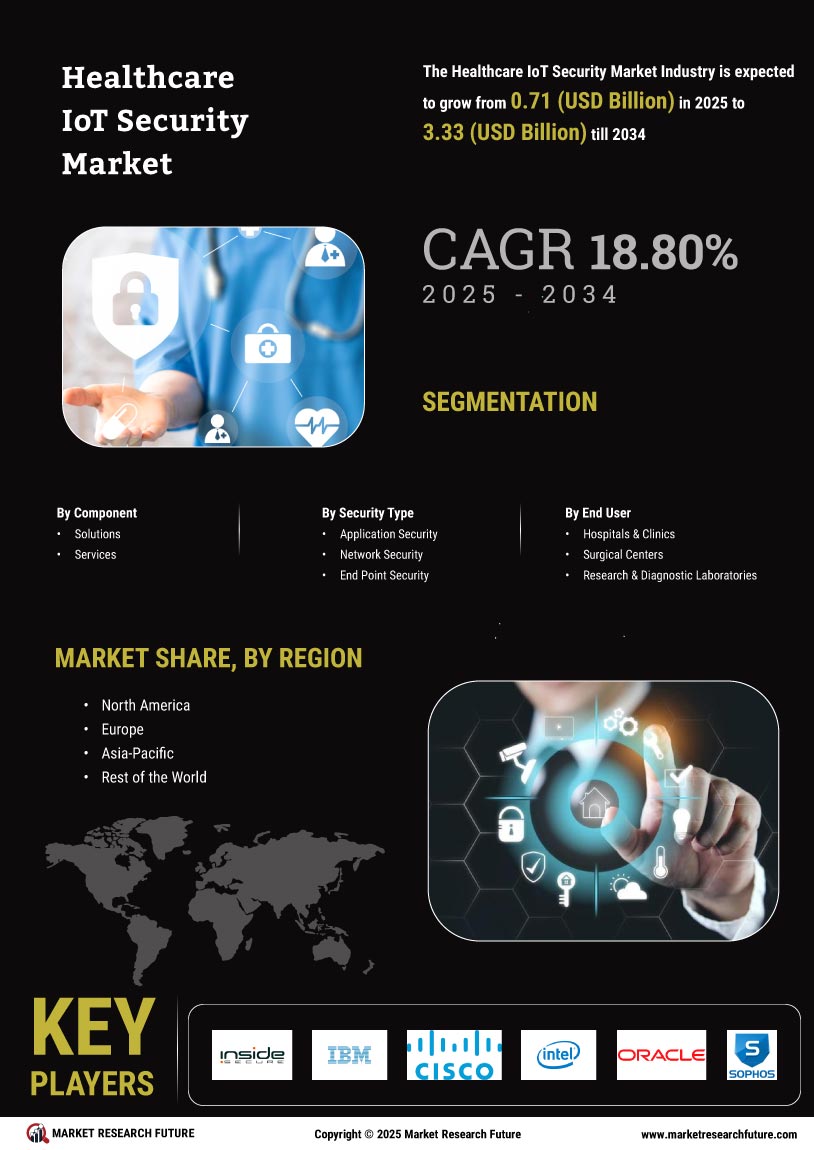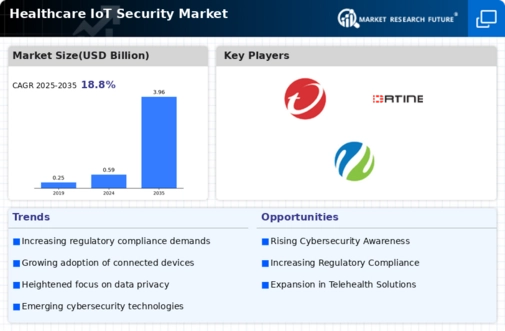Leading market players are investing heavily in research and development in order to expand their product lines, which will help the Healthcare IoT Security market, grow even more. Market participants are also undertaking a variety of strategic activities to expand their footprint, with important market developments including new product launches, contractual agreements, mergers and acquisitions, higher investments, and collaboration with other organizations. To expand and survive in a more competitive and rising market climate, Healthcare IoT Security Industry must offer cost-effective items.
Manufacturing locally to minimize operational costs is one of the key business tactics used by manufacturers in the Healthcare IoT Security Industry to benefit clients and increase the market sector. In recent years, the Healthcare IoT Security Industry has offered some of the most significant advantages to medicine.
Major players in the Healthcare IoT Security market, including Inside Secure SA, IBM Corporation, Cisco Systems Inc., Intel Corporation, Oracle Corporation, Sophos Group Plc, Symantec Corporation, Trend Micro Inc., Checkpoint Software Technology, Kaspersky Labs, Fortinet Inc, Intelen Inc., Eurotech SpA, Deutsche Telekom AG, SecureFLO LLC, Dell Corporation, Atmel Corporation, Security Mentor, Klynveld Peat Marwick Goerdeler, and Agile Cyber Security Solutions, LLC, are attempting to increase market demand by investing in research and development operations.
GE HealthCare Technologies Inc. (GE HealthCare) is a leading provider of medical devices, specialising in the design, development, production, and distribution of diagnostic imaging, clinical systems, drug discovery, biopharmaceutical production, cellular technologies, imaging agents for use in medical scanning, and a variety of healthcare IT products. Additionally, GE HealthCare offers services including computerised data management, performance enhancement and performance solutions, and remote diagnosis and repair services for medical devices made by the business and others. The corporation uses subsidiaries and affiliates to run its operations all over the world. Chicago, Illinois, in the United States, serves as the company's headquarters.
In order to serve patients with chronic and post-acute care, GE Healthcare and AMC Health joined in October 2022.
Microsoft Corp. (Microsoft) offers a variety of software-related services, including development, licencing, and support. The company offers a wide range of server applications, desktop and server administration tools, video games, cross-device productivity tools, business solution tools, and operating systems. It also offers training and certification services. It also develops, manufactures, and sells hardware products like PCs, tablets, game consoles, and other cutting-edge technology. Among the many services the business provides are consulting, cloud-based solutions, and solution support.
Microsoft markets, distributes, and sells its goods through original equipment manufacturers, distributors, resellers, online marketplaces, Microsoft stores, and other partner channels. The business has operations in the Americas, Europe, Asia-Pacific, Middle East, and Africa. The headquarters of Microsoft are located in Redmond, Washington, in the United States. In March 2022, Microsoft announced breakthroughs in cloud technology for healthcare and the life sciences, including the general availability of Azure Health Data Services and upgrades to Microsoft Cloud for Healthcare.















Leave a Comment